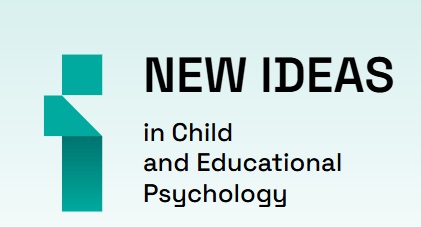Keywords
perception
Publications
Matveeva L.V., Anikeeva T.Ya., Mochalova Yu.V., Makalatia A.G. (2019). The perception of children of preschool and younger school age of the characters of domestic and foreign cartoons. Moscow University Psychology Bulletin, 3, 105-123
Relevance. Cartoons carry the information about the world, human relations, norms of behavior and values to children, forming a kind of information "zone of the nearest development" of a child in the terminology of L.S. Vygotsky. In a situation of intercultural competition, it is important to understand what symbols, values, meanings, norms of behavior, perceived from domestic and foreign cartoons, can positively and/or negatively transform the process of socialization and development of the child's personality.
Objective. Research of specificity of perception of esthetic and moral characteristics of heroes of domestic and foreign animated films by children of preschool and primary school age.
Methods. Focus group interview, expert survey, semantic differential.
Sample. 24 kids 4-5 years; 30 pupils of primary school 8-9 years. Kindergarten teachers and teachers of primary school, 10 females 36-50 years.
Results. Foreign cartoons in the perception of children surpass domestic in quality of performance, modernity and attractiveness of the behavioral patterns of the characters, but lose in depth of the topic revelation. For preschoolers, the main carriers of values are the main characters of cartoons. Categories: "mind", "force", “beauty”, "kindness", "danger", "justice" are leadingin assessments of behavior of characters. Children record social distance through the categories of "Senior – Junior" and "Big – Small". Younger pupils do not see the moral background of the behavior of the small character of “Tom and Jerry” cartoon.
Conclusion. The results show that children are able to distinguish cartoon characters by cognitive categories, aesthetic category and also by moral. The content of the information environment, in which children immersed today, can inhibit the development of communication abilities of children and their emotional intelligence.
Received: 06/07/2019
Accepted: 06/25/2019
Pages: 105-123
DOI: 10.11621/vsp.2019.03.105
Keywords: perception;
development;
child socialization;
animated films;
image of the hero;
character assessment categories;
Available Online: 08/29/2019
Semenov I.N.(2015). The reflexivity of self-observation and personology of introspection: To ontology and methodology of ref lexive psychology of personality. Moscow University Psychology Bulletin, 3, 22-39
First part of the article analyzes the historical and scientific, etymological and methodological problems of psycho-reflexivity personology study self-perception and self-observation – through introspection – a man’s own Self as an integrated personality and social personality. Considered external opposition, socio-objective determination of human mental activity and its internal, reflexive sense of life, the source of which is the individual amateur I. From these positions explicated logic of perceptual psychology: the study of perception through introspection objectivity to subjectivity reflection reflexive self-perpetuating I proposed ontology of psychological reality of the inner life, where its components are incorporated such as: self-actualization, self-perception, self-knowledge, self-understanding, self-awareness, self-determination, selfactualization personality I. In the context of reflexive psychology, personology considered reflexive nature of introspection problem-conflict situations in the self-identity sphere of artistic and scientific creativity. In the second part of the article the proposed theoretical propositions are realized on empirical material reflexive psychological analysis of introspective self-life-creativity outstanding writer and thinker M.M. Zoshchenko. Given held them all his life a dramatic existential introspection M.M. Zoshchenko and corrected to reflect the semantic field of their identity, which was reflected in the development of introspective style as his artistic creativity, and social behavior of the individual. In conclusion, characterized the role of reflective dialogue as a means of enhancing introspective self-perception and self-identity I am human.
Pages: 22-39
DOI: 10.11621/vsp.2015.03.22
Keywords: psychology;
methodology;
ontology;
personology;
personality;
behavior;
activity;
consciousness;
introspection;
reflection;
cognition;
perception;
self-perception;
self-observation;
sense;
understanding;
self-development;
self-concept;
professional self-concept;
subjectivity;
life-creativity;
Available Online: 09/30/2015
Voiskounsky A.E., Menshikova G.Ya. (2008). The use of virtual reality systems in psychology. Moscow University Psychology Bulletin,1,22-36
In the article experimental investigations, performed in virtual reality (VR) systems, are considered. Perspective modifications of research paradigm in cognitive, orga4 nizational, social, clinical psychology are described. The possibility of application of VR technology in educational psychology, psychotherapy and psychological rehabilitation are discussed.
Received: 01/10/2008
Pages: 22-36
Keywords: virtual reality;
experimental psychology;
interaction;
perception;
training;
psychotherapy;
modeling;
Artemtseva N.G., Ilyasov I.I.(2009). Features of perception of psychological characteristics of person by his face: differential approach.The Moscow University Psychology Bulletin, 3, 54-65
The results of a research of the obverse asymmetry influence on the perception of a number of personal characteristics of man including rationality and irrationality in cognition are described in the article. It has been shown that in perception of vertically divided (along the nose line) face pictures the psychological characteristics perceived by each half of the face is partially different. However, the rationality or irrationality in cognition is perceived by any half of the face — right or left — equally well.
Received: 11/01/2007
Pages: 54-65
Keywords: cognition;
perception;
psychological types;
the differential approach;
rationality;
irrationality;
asymmetry of the face;









